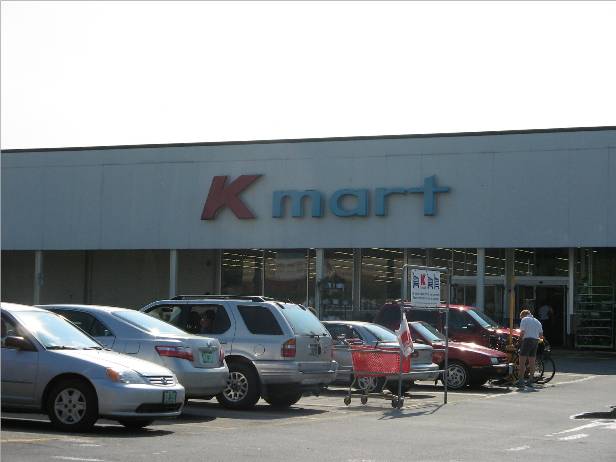 Goodbye, Marshall Field’s. Goodbye, Famous-Barr. Goodbye, The Jones Store. Goodbye, Robinsons-May. Goodbye, Meier & Frank. Goodbye, Foley’s. Goodbye, Strawbridges. Goodbye, Kaufmann’s. Goodbye, L.S. Ayres. Goodbye, Filene’s. Last but certainly not least, goodbye, Hecht’s. You all no longer exist and are all now Macy’s.
Goodbye, Marshall Field’s. Goodbye, Famous-Barr. Goodbye, The Jones Store. Goodbye, Robinsons-May. Goodbye, Meier & Frank. Goodbye, Foley’s. Goodbye, Strawbridges. Goodbye, Kaufmann’s. Goodbye, L.S. Ayres. Goodbye, Filene’s. Last but certainly not least, goodbye, Hecht’s. You all no longer exist and are all now Macy’s.
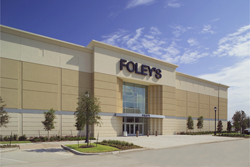 On Saturday of this past weekend, September 9, 2006, all of those brands officially became Macy’s, along with countless others which have been swallowed up and converted to the Macy’s nameplate over the years in order to form this national brand.
On Saturday of this past weekend, September 9, 2006, all of those brands officially became Macy’s, along with countless others which have been swallowed up and converted to the Macy’s nameplate over the years in order to form this national brand.
While many are in uproar and upset about *their* local store disappearing and while no single store to my knowledge has ever converted this many brands at once, this is not a new phenomenon.
I just read the story of Macy’s and, like the history of many chains, it’s an interesting read full of ups and downs, brutal takeover attempts, a devastating shipwreck in icy waters on the high seas of the North Atlantic, and many different department store chains along the way. Since Macy’s currently operates in 45 states (you in Alaska, Arkansas, Iowa, Mississippi, and Nebraska are going to start feeling left out), odds are you have a Macy’s near you. And, since Macy’s just added 330 stores this last weekend to make 850 stores in total, chances are that although you might have heard of Macy’s, you may have never actually been to one. (Who am I kidding, the people who read this are probably well aware…) anyway, here we go.
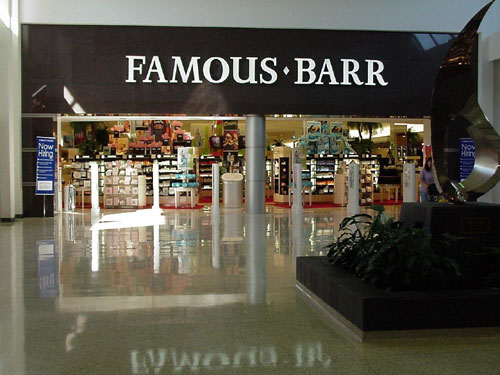 Macy’s was founded by Rowland Hussey Macy in Haverhill, Massachusetts. Quickly, Macy moved his company to various locations in New York, lasting almost 40 years on the corner of 18th and Broadway.
Macy’s was founded by Rowland Hussey Macy in Haverhill, Massachusetts. Quickly, Macy moved his company to various locations in New York, lasting almost 40 years on the corner of 18th and Broadway.
In 1896, Macy’s was acquired by Isidor Straus (who later died aboard the RMS Titanic) and his brother Nathan. They moved Macy’s into its current digs on the corner of 34th and Broadway. The store got bigger and bigger and eventually enveloped nearly the entire block. However, one Brownstone house right on the corner of 34th and Broadway held out and reportedly charges Macy’s exorbitant rent to this day. You’re all familiar with the house, you just don’t know it. It’s covered by a giant red bag which reads “The world’s largest store” – and it is the world’s largest store at over 2 million square feet of selling space. That’s larger than over 90% of the shopping centers in the country.
 Throughout the next few decades, Macy’s was in the business of expansion. They opened satellite locations in Kansas City, San Francisco, Toledo, Atlanta, and other cities. They acquired many smaller chains such as New Jersey based Bamberger’s in 1929. But, in the 1980s, Macy’s bit off more than it could chew and was in dire financial straits. In 1985, it divested itself of its midwest locations in Kansas City and Toledo, exiting the region for nearly 2 decades save for a lone store at the Mall of America in Minnesota which opened in 1992. In 1986, Macy’s ended the long-term operation of a name it owned in New Jersey and the mid-Atlantic states by flipping the Bamberger’s nameplate to Macy’s.
Throughout the next few decades, Macy’s was in the business of expansion. They opened satellite locations in Kansas City, San Francisco, Toledo, Atlanta, and other cities. They acquired many smaller chains such as New Jersey based Bamberger’s in 1929. But, in the 1980s, Macy’s bit off more than it could chew and was in dire financial straits. In 1985, it divested itself of its midwest locations in Kansas City and Toledo, exiting the region for nearly 2 decades save for a lone store at the Mall of America in Minnesota which opened in 1992. In 1986, Macy’s ended the long-term operation of a name it owned in New Jersey and the mid-Atlantic states by flipping the Bamberger’s nameplate to Macy’s.
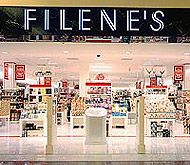 Also in 1986, a takeover battle of epic proportions ensued, as Macy’s CEO Edward Finkelstein became engaged in a vicious takeover battle with a Canadian company over the much coveted Federated Department Store chain. This is where the story gets interesting again (and maybe a little confusing) but we’ll iron out all the details. Finkelstein lost the hostile takeover bid in 1986; however, as a result, he got some of Federated’s booty, California’s Bullocks and I. Magnin chains.
Also in 1986, a takeover battle of epic proportions ensued, as Macy’s CEO Edward Finkelstein became engaged in a vicious takeover battle with a Canadian company over the much coveted Federated Department Store chain. This is where the story gets interesting again (and maybe a little confusing) but we’ll iron out all the details. Finkelstein lost the hostile takeover bid in 1986; however, as a result, he got some of Federated’s booty, California’s Bullocks and I. Magnin chains.
In the early 1990s, there was trouble in paradise as the Canadian company which acquired Federated declared bankruptcy. 1992 also saw trouble for 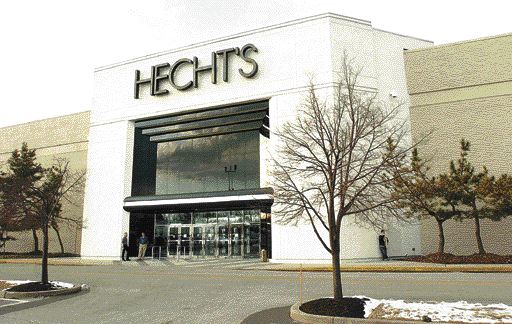 Macy’s which declared bankruptcy of its own right. In 1994, it seems as though these two bankrupt entities would be a match made in heaven and Federated acquired Macy’s. Finally Macy’s and Federated were one. Immediately following the merger, Federated chose to shutter the entire upscale I. Magnin chain in California, converting many to the Macy’s or Bullock’s nameplate. Federated also chose to fold the Abraham and Straus nameplate in the New York area and the Jordan Marsh nameplate in the Boston area into Macy’s in 1995 and 1996, respectively. Feeling hungry, Federated marched on, attempting and eventually failing an acquisition of the bankrupt Wanamaker/Woodward & Lothrop chains in the mid-Atlantic region. Instead, it acquired the Broadway/Emporium/Weinstock chain of California and folded those chains as well as the Bullock’s locations they already had into the Macy’s nameplate.
Macy’s which declared bankruptcy of its own right. In 1994, it seems as though these two bankrupt entities would be a match made in heaven and Federated acquired Macy’s. Finally Macy’s and Federated were one. Immediately following the merger, Federated chose to shutter the entire upscale I. Magnin chain in California, converting many to the Macy’s or Bullock’s nameplate. Federated also chose to fold the Abraham and Straus nameplate in the New York area and the Jordan Marsh nameplate in the Boston area into Macy’s in 1995 and 1996, respectively. Feeling hungry, Federated marched on, attempting and eventually failing an acquisition of the bankrupt Wanamaker/Woodward & Lothrop chains in the mid-Atlantic region. Instead, it acquired the Broadway/Emporium/Weinstock chain of California and folded those chains as well as the Bullock’s locations they already had into the Macy’s nameplate.
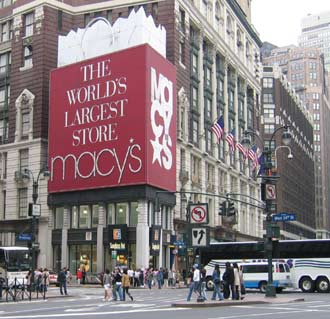 Fast forward to 2001. Federated dissolved its Stern’s nameplate and many of the stores became Macy’s. Also in 2001 the Liberty House chain of Hawaii and Guam were acquired by Federated and flipped to the Macy’s nameplate.
Fast forward to 2001. Federated dissolved its Stern’s nameplate and many of the stores became Macy’s. Also in 2001 the Liberty House chain of Hawaii and Guam were acquired by Federated and flipped to the Macy’s nameplate.
2003 saw one of the biggest leaps forward for Federated-Macy’s, as they chose to rebrand its stores in the Pacific Northwest (Bon-Marche), Memphis area (Goldsmith’s), Florida (Burdines), and the Ohio Valley region of IN/OH/PA/KY/WV (Lazarus) to Macy’s. The branding was gradual, with each store given a hyphenated “-Macy’s” suffix for 2 years from 2003, culminating with just Macy’s in March of 2005, effectively eliminating those brands forever.
Now we’re almost up to date to the biggest merger in Federated-Macy’s history, with May Company in 2005. This merger happened in February  2005, effectively creating the second largest department store chain behind Sears with over $30 billion in annual sales. (For those still paying attention, May Company was the parent at the time of all the stores which just converted to Macy’s last weekend.) In July 2005 the death knell was raised against the stores of the May Company chain as Federated announced that based on the previous successes they had converting regional nameplates to the Macy’s name (see previous paragraph), all May chains would be converted to Macy’s or Bloomingdale’s. Federated announced they wanted to create a national department store brand in Macy’s and they finally had the stores to do so, so they began store conversions on the 10 May brands during the Summer of 2006. First, Macy’s gift cards started appearing, then some of their banners and advertisements and finally, the signs came down and big red stars went up everywhere. Last Saturday, September 9, was to be the official full conversion.
2005, effectively creating the second largest department store chain behind Sears with over $30 billion in annual sales. (For those still paying attention, May Company was the parent at the time of all the stores which just converted to Macy’s last weekend.) In July 2005 the death knell was raised against the stores of the May Company chain as Federated announced that based on the previous successes they had converting regional nameplates to the Macy’s name (see previous paragraph), all May chains would be converted to Macy’s or Bloomingdale’s. Federated announced they wanted to create a national department store brand in Macy’s and they finally had the stores to do so, so they began store conversions on the 10 May brands during the Summer of 2006. First, Macy’s gift cards started appearing, then some of their banners and advertisements and finally, the signs came down and big red stars went up everywhere. Last Saturday, September 9, was to be the official full conversion.
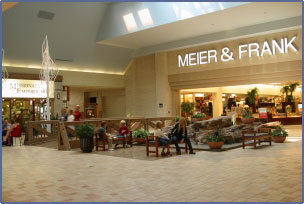 As I alluded to earlier in the post, many are upset at this drastic change in retailing. In fact, over 50,000 people have signed a petition to keep Marshall Field’s, and there are also T-Shirts for the cause. But as you can see, department stores are a changing animal, getting swallowed up or vice versa and it’s really all in flux. My two cents? I feel that Macy’s has its work cut out for it. A tough road ahead, but majorly unprecedented successes if they can pull it off properly. I personally value variety in the marketplace and feel that it’s not only cool to go to a distant city and see different stores, but it probably bears upon the quality of service, variety, and prices. On one hand, people are loyal to stores which have heritage in their area. It’s purely topophilic, but what better marketing campaign does a store need to have than being tied to a particular place? On the other hand, the logistics of having a unified national brand is certainly more cost-effective and easier to manage.
As I alluded to earlier in the post, many are upset at this drastic change in retailing. In fact, over 50,000 people have signed a petition to keep Marshall Field’s, and there are also T-Shirts for the cause. But as you can see, department stores are a changing animal, getting swallowed up or vice versa and it’s really all in flux. My two cents? I feel that Macy’s has its work cut out for it. A tough road ahead, but majorly unprecedented successes if they can pull it off properly. I personally value variety in the marketplace and feel that it’s not only cool to go to a distant city and see different stores, but it probably bears upon the quality of service, variety, and prices. On one hand, people are loyal to stores which have heritage in their area. It’s purely topophilic, but what better marketing campaign does a store need to have than being tied to a particular place? On the other hand, the logistics of having a unified national brand is certainly more cost-effective and easier to manage.
 There have already been problems with the merger. In Chicago’s flagship Macy’s on State Street, a group of backlit signs improperly labelled the streets and avenues which bound the block where the store sits. Locals, who are still reeling from the loss of their Marshall Fields, were quick to point out the snafu and how they feel Macy’s is spread too thin to care about them as customers. I went to Woodfield Mall in Chicago and saw several people wearing T-shirts they purchased on ebay which indignantly stated “Chicago shops at Marshall Fields NOT Macy’s” – What’s in the future for these stores? Time will tell, I suppose.
There have already been problems with the merger. In Chicago’s flagship Macy’s on State Street, a group of backlit signs improperly labelled the streets and avenues which bound the block where the store sits. Locals, who are still reeling from the loss of their Marshall Fields, were quick to point out the snafu and how they feel Macy’s is spread too thin to care about them as customers. I went to Woodfield Mall in Chicago and saw several people wearing T-shirts they purchased on ebay which indignantly stated “Chicago shops at Marshall Fields NOT Macy’s” – What’s in the future for these stores? Time will tell, I suppose.



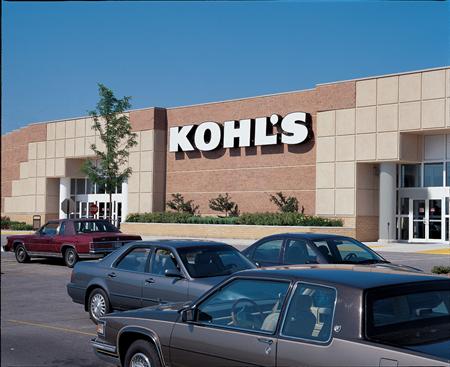 The linear growth model of Kohl’s reads more like a log function than anything else. Coming from suburban Milwaukee, Wisconsin, Kohl’s has grown by leaps and bounds to be as successful as it is today. But why? I offer up a few suggestions. The first is that Kohl’s was opportunistic and came up at the right place in the right time. Kohl’s Department Stores began in 1962 under the helm of Max Kohl, a grocer in the Milwaukee area since 1946 who operated Kohl’s food stores. In 1972, the British-American Tobacco Company (BATUS) purchased both Kohl’s grocery and department stores, yet the Kohl family stayed on to administrate the stores until 1979 when they left altogether. Interestingly, Max Kohl’s son Herb is now the senior United States Senator from Wisconsin.
The linear growth model of Kohl’s reads more like a log function than anything else. Coming from suburban Milwaukee, Wisconsin, Kohl’s has grown by leaps and bounds to be as successful as it is today. But why? I offer up a few suggestions. The first is that Kohl’s was opportunistic and came up at the right place in the right time. Kohl’s Department Stores began in 1962 under the helm of Max Kohl, a grocer in the Milwaukee area since 1946 who operated Kohl’s food stores. In 1972, the British-American Tobacco Company (BATUS) purchased both Kohl’s grocery and department stores, yet the Kohl family stayed on to administrate the stores until 1979 when they left altogether. Interestingly, Max Kohl’s son Herb is now the senior United States Senator from Wisconsin. 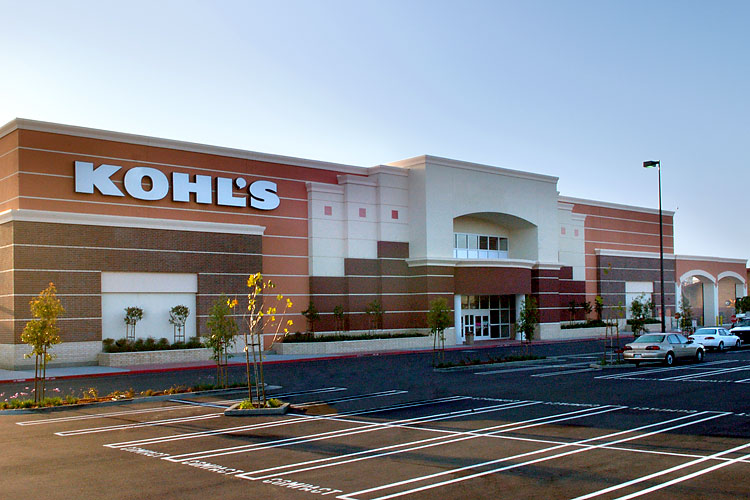 Expansion came slow for Kohl’s at first, but once it began it rose exponentially. Until the mid 1980s there were less than 40 stores in Wisconsin, Illinois, and Indiana. Also in the mid-1980s, Kohl’s took over a struggling similar chain called Main Street Stores in the Chicagoland area, and they opened their store in my hometown of Janesville, Wisconsin in 1986, in a former Montgomery Ward location in the Janesville Mall.
Expansion came slow for Kohl’s at first, but once it began it rose exponentially. Until the mid 1980s there were less than 40 stores in Wisconsin, Illinois, and Indiana. Also in the mid-1980s, Kohl’s took over a struggling similar chain called Main Street Stores in the Chicagoland area, and they opened their store in my hometown of Janesville, Wisconsin in 1986, in a former Montgomery Ward location in the Janesville Mall.  Since the 80s, Kohl’s has expanded where other chains have failed, pairing its excellent customer service reputation with high quality, often name brand merchandise at discounted prices. Kohl’s made a niche market for itself in between discounters such as Target, Wal-Mart, and K-Mart, and full-line department stores like Macy’s, Dillard’s, and JCPenney. As Kohl’s focuses heavily on softline merchandise and very little on electronics (aside from small appliances and gadgets, Kohl’s abandoned its full electronics department in 1994) it is very popular with women. They’ve used other chain failures such as Clover, Ames, Caldor, and Bradlees in the northeast to swoop in and open stores there to expand their concept over the past 9 years. If Kohl’s continues on their track to 1,200 stores by 2010 they will be one of the most successful chains in history.
Since the 80s, Kohl’s has expanded where other chains have failed, pairing its excellent customer service reputation with high quality, often name brand merchandise at discounted prices. Kohl’s made a niche market for itself in between discounters such as Target, Wal-Mart, and K-Mart, and full-line department stores like Macy’s, Dillard’s, and JCPenney. As Kohl’s focuses heavily on softline merchandise and very little on electronics (aside from small appliances and gadgets, Kohl’s abandoned its full electronics department in 1994) it is very popular with women. They’ve used other chain failures such as Clover, Ames, Caldor, and Bradlees in the northeast to swoop in and open stores there to expand their concept over the past 9 years. If Kohl’s continues on their track to 1,200 stores by 2010 they will be one of the most successful chains in history.




 On Saturday of this past weekend, September 9, 2006, all of those brands officially became Macy’s
On Saturday of this past weekend, September 9, 2006, all of those brands officially became Macy’s










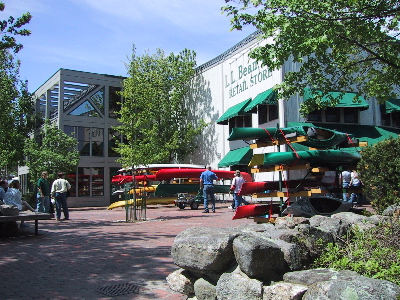
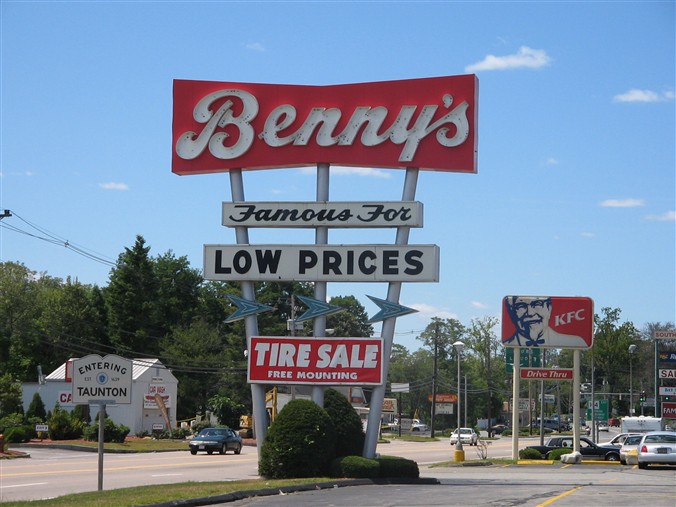
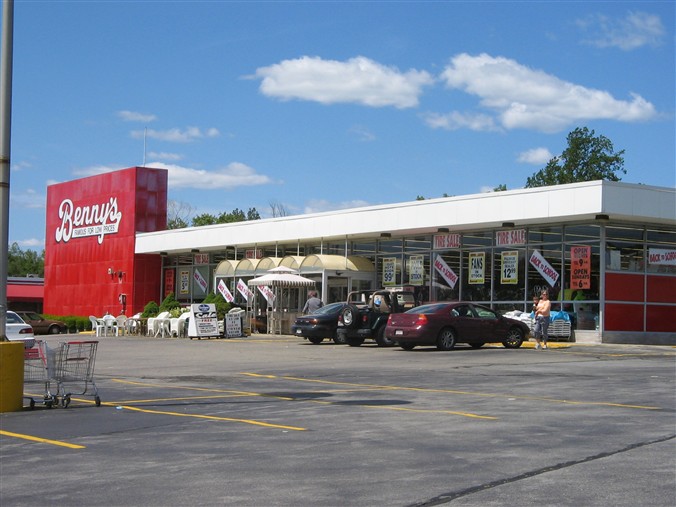
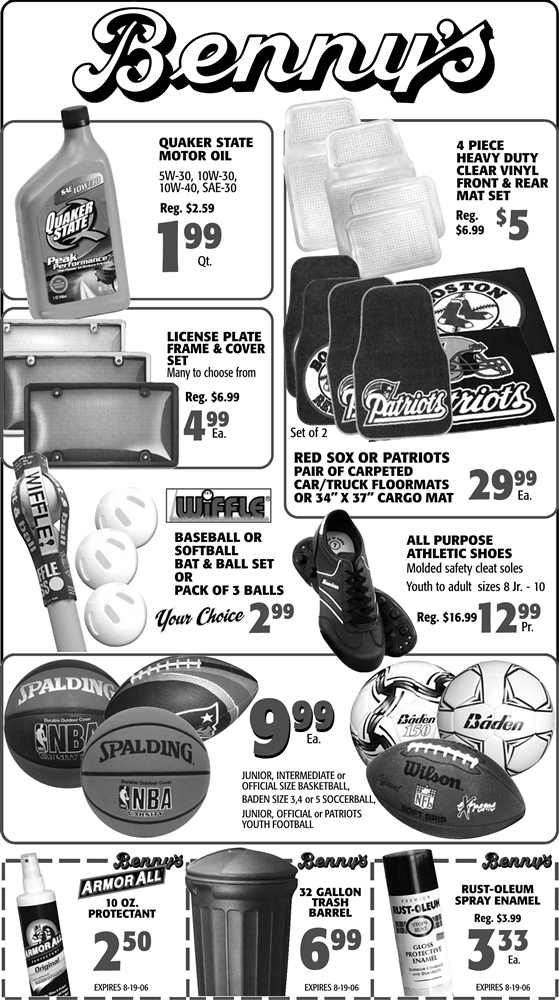
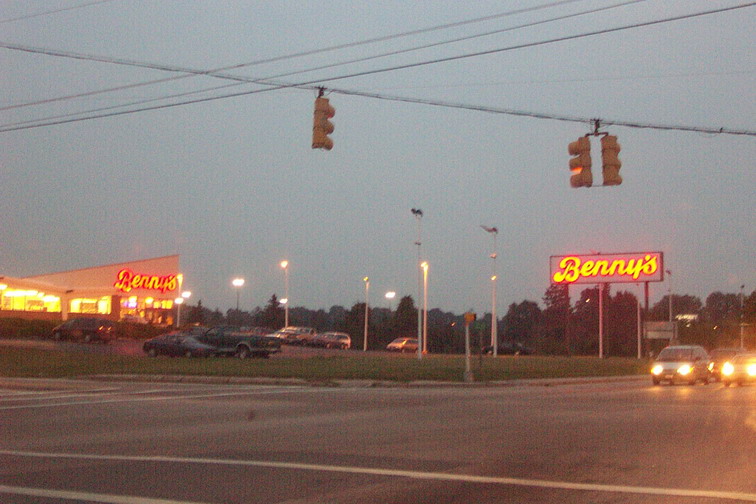
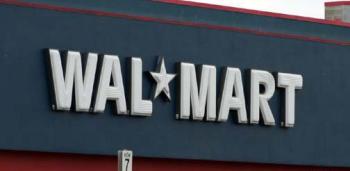

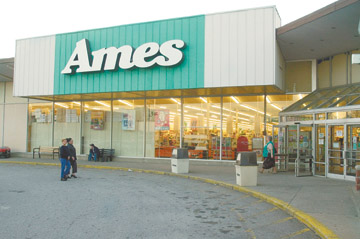
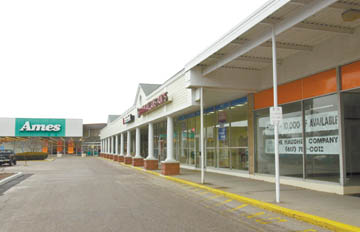
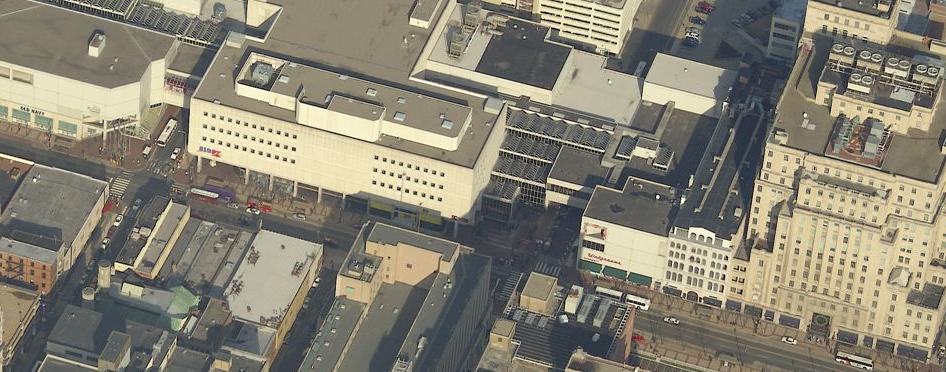
 The historic Strawbridge’s store, which opened in 1931, is attached to the aging, 1,100,000 square foot
The historic Strawbridge’s store, which opened in 1931, is attached to the aging, 1,100,000 square foot 
